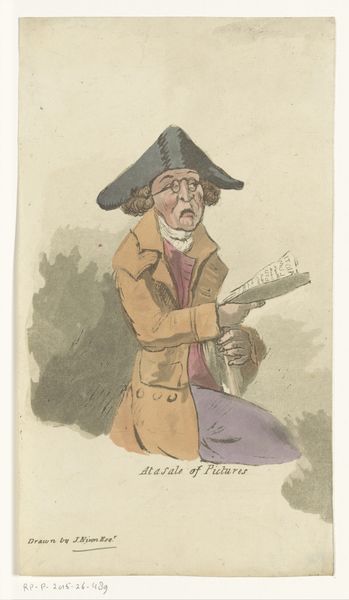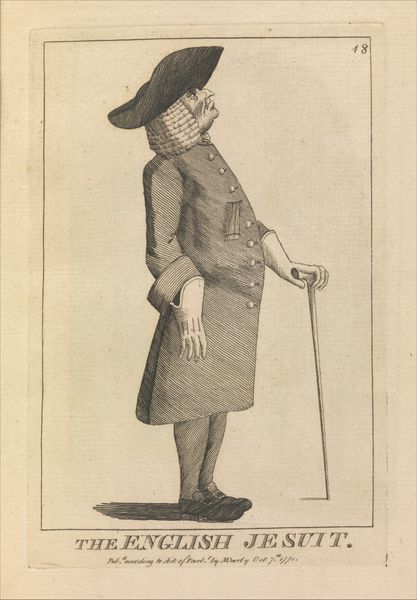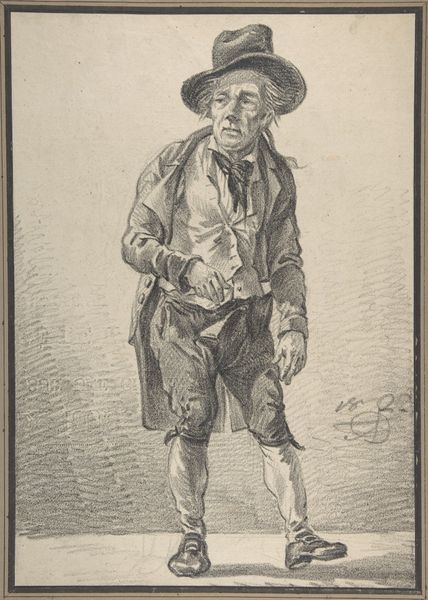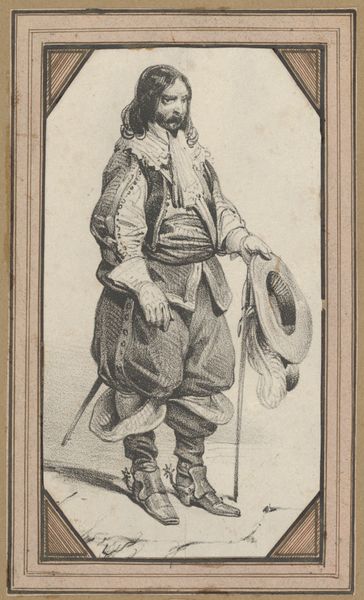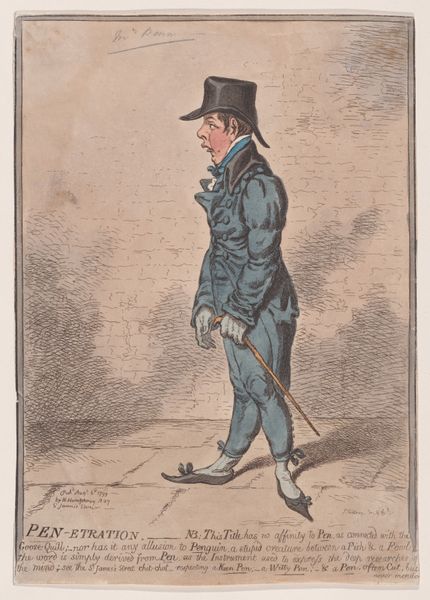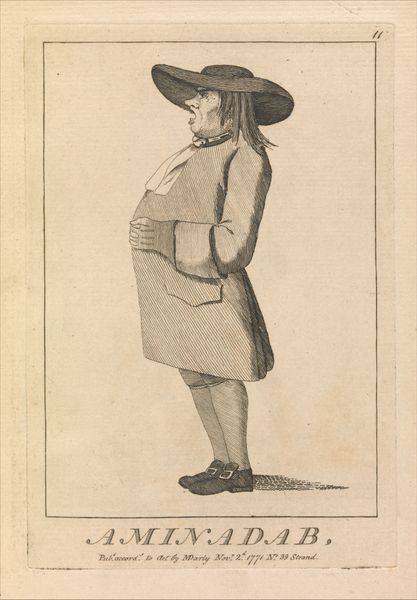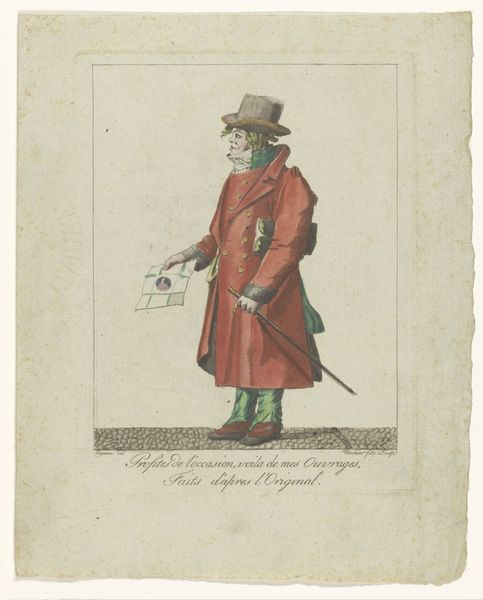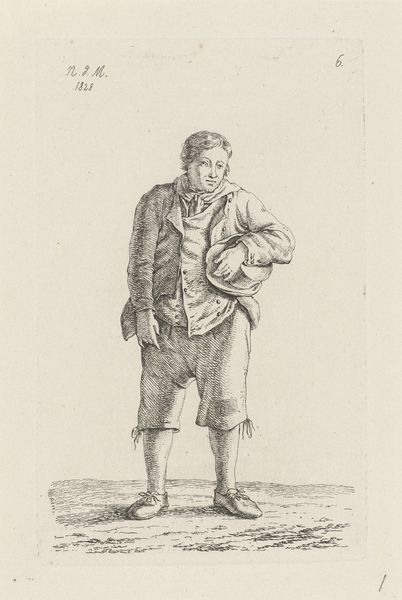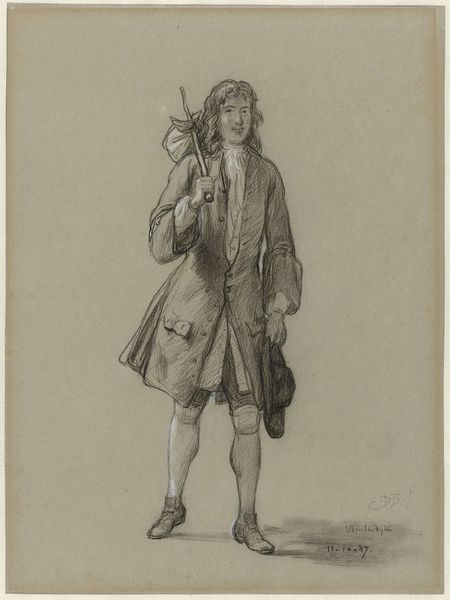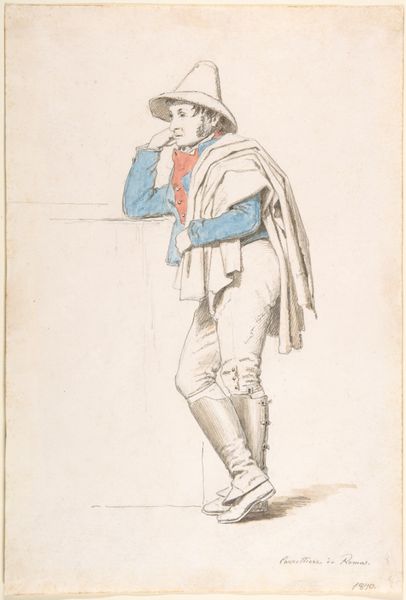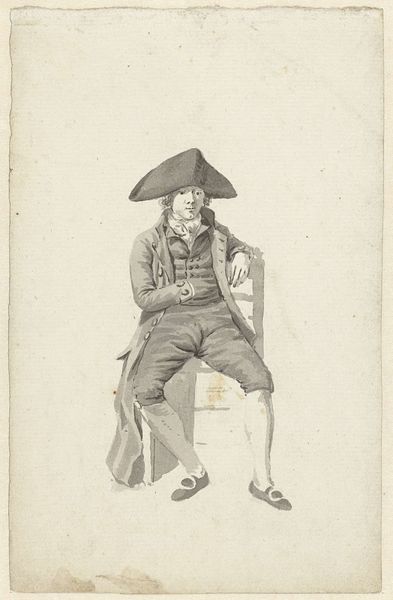
print, etching, watercolor
#
portrait
# print
#
etching
#
caricature
#
caricature
#
watercolor
#
romanticism
#
portrait drawing
#
portrait art
Dimensions: plate: 39.6 × 25.9 cm (15 9/16 × 10 3/16 in.) sheet: 45.5 × 30.1 cm (17 15/16 × 11 7/8 in.)
Copyright: National Gallery of Art: CC0 1.0
Editor: This is Carlo Lasinio's "Babo Giorgio," an etching with watercolor from around 1790. The figure has such a distinctive look! It's a caricature, obviously, but it makes me wonder about how social class was represented and consumed at the time. What can you tell me about this image in its historical context? Curator: This print reflects the late 18th century's fascination with physiognomy and social types. Caricatures like this one were hugely popular, and they served as a way for the upper classes to define themselves against perceived 'others.' The image relies on stereotypes. Does that change how you perceive the humor? Editor: It does make me pause. So, this wasn’t just a bit of harmless fun? Curator: Not exactly. Prints like these participated in the construction of social hierarchies and prejudices. Lasinio’s choice of etching allows for detail, and then the watercolor adds a layer of realism that reinforces the caricature, almost making it appear… factual. We need to consider what this 'factuality' implies, who is in on the joke, and who is the object of it. What does the inscription on the towel say? Editor: It says “Babo Giorgio.” It’s interesting how the image incorporates text *within* the scene itself. So, it's literally labeling the figure. That feels especially pointed now. Curator: Exactly! It removes any ambiguity and makes it undeniably about *this* individual, or at least, the artist's representation of him. In essence, caricature in the 18th century wasn't just a silly doodle but a powerful tool that cemented social norms. Editor: Wow, I’m not sure I’ll look at caricatures the same way again! I guess it highlights how art is always shaped by the society in which it is created and viewed. Curator: Precisely! This piece allows us to consider art’s role in visually enacting social differences, and how the institutions that displayed it played a part in that process.
Comments
No comments
Be the first to comment and join the conversation on the ultimate creative platform.
